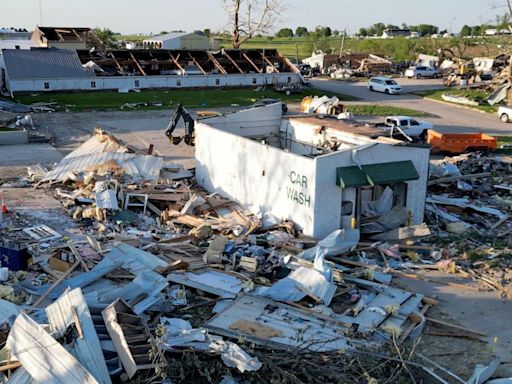Search results
- Location. Wichita, the largest city in Kansas with a population of 395,699, is the county seat of Sedgwick County. Major highways, including the Kansas Turnpike, U.S. 400 and Interstate I-135, link the city with a large trade area that encompasses a population of more than one million people within a 100-mile radius.
- Historical Background. Wichita has served as a trading center and meeting place for many years. The first permanent settlement in Wichita was a collection of grass houses inhabited by the Wichita Indians in 1863.
- Business & Industry. During the 1890s, the grain produced from the farms in the region more than equaled the wealth formerly generated by the cattle trade, and Wichita became a trade and milling center.
- Quality of Life. Wichita has evolved into a cultural and entertainment center. The downtown district offers restaurants, retail shops, museums and parks.
Wichita City Hall (2018) Under state statute, Wichita is a city of the first class. Since 1917, it has had a council–manager form of government. The city council consists of seven members popularly elected every four years with staggered terms in office. For representative purposes, the city is divided into six districts with one council ...
People also ask
What county is Wichita Kansas?
Is Wichita a city?
What makes Wichita a great city?
Why is Wichita Kansas a great place to live?
- Overview
- History
- The contemporary city
Wichita, city, seat (1870) of Sedgwick county, south-central Kansas, U.S. It lies on the Arkansas River near the mouth of the Little Arkansas, about 140 miles (225 km) southwest of Topeka. The city site is a gently rolling plain at an elevation of about 1,300 feet (400 metres). Summers are hot and winters cool; precipitation is moderate and falls mainly during the warm months.
Wichita, the largest city in the state, is at the heart of a three-county metropolitan area. Nearby communities include Park City (north), Andover (east), and Derby and Haysville (south). Inc. city, 1871. Area city, 139 square miles (360 square km). Pop. (2010) 382,368; Wichita Metro Area, 623,061; (2020) 397,532; Wichita Metro Area, 647,610.
Wichita was founded in 1864 as a trading post on the site of a village of the Wichita Indians. It owed its early development to the Texas cattle trade along the Chisholm Trail and to the rapid spread of agricultural settlement along the Atchison, Topeka and Santa Fe Railway, then under construction. In its early years Wichita was a stopover on cattle drives to Abilene (Kansas) and other points as the railroad moved west; in 1872 the line reached Wichita, and the city became a major cattle-shipping centre. By 1875 farmers’ fences were obstructing the movement of beef herds, but grain became an important commodity.
Growth was continuous and rapid after 1900, with the population surpassing 100,000 in the 1920s and 250,000 in the 1950s. Meatpacking was a major industrial activity at the beginning of the 20th century, but aircraft manufacturing, begun in the 1920s, soon dominated Wichita’s economy. The discovery of oil there added to the city’s wealth. People of European ancestry have for long constituted the great majority of the population. African Americans, roughly one-tenth of the total, constitute the largest minority group, and there are small but growing communities of Hispanics and Asians.
Wichita’s economy has become much more diversified since the heyday of aviation manufacturing. Aircraft and aerospace industries continue to be leading economic activities, although they remain susceptible to market fluctuations (such as the downturn in the airline industry following the September 11 attacks in 2001). Other manufactures include machinery, computer and precision equipment, and chemicals and petrochemicals. Services (including wholesale and retail trade, government, and health care) are increasingly important, as is the economic input of McConnell Air Force Base, which adjoins the city on the southeast.
Wichita is the seat of Friends University (1898), Newman University (1933), and Wichita State University (1895). The city has a symphony orchestra and a ballet company. The Museum of World Treasures houses an extensive collection of ancient arts; the Wichita Art Museum contains works by American artists; and the Mid-America All-Indian Center traces the culture and history of Native American peoples.
Are you a student? Get Britannica Premium for only 24.95 - a 67% discount!
Learn More
- The Editors of Encyclopaedia Britannica
May 5, 2024 · The City of Wichita is a leading-edge organization serving a dynamic and inclusive community. As an exceptionally well-run city, we will keep Wichita safe, grow our economy, build dependable infrastructure and provide conditions for living well. Social ads are paid for by the City of Wichita.
About Wichita. Wichita is the largest city in the state of Kansas and the 48th-largest city in the United States, with a population of more than 389,000. The estimated population of the Wichita metropolitan area is 650,000. The Wild West gave birth to a new era as cowboys and Indians roamed across the Plains, many establishing towns west of the ...
It's a movement. Excitement. City Pride. Friendly faces - all committed to creating a city to visit and a place to call home. It’s a city that offers amazing experiences delivered with heart. From arts to attractions, nightlife and sporting events, you'll feel the energy at every turn. Wichita is a city that welcomes all and celebrates all.
Jul 14, 2020 · Today, Wichita is Kansas' largest city filled with significant aviation and western heritage, arts and culture, entrepreneurs and places to dine, shop, and play. As we celebrate Wichita’s sesquicentennial, take a look back at some important dates in the city’s history. 1863- First permanent settlement of Wichita Indians recorded. James R ...






